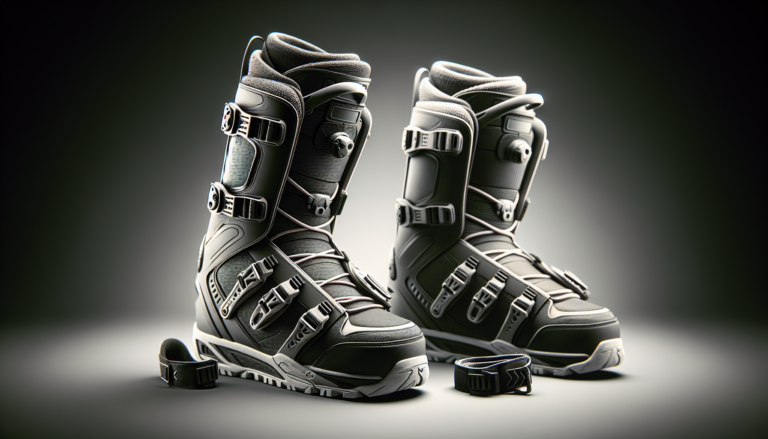Why Proper Snowboard Boot Fit is Crucial
Wearing snowboard boots that fit properly is essential for any rider looking to enjoy their time on the slopes. The right fit not only enhances your performance but also ensures a comfortable and safe experience. A well-fitted boot provides the necessary support, responsiveness, and control needed to navigate various terrains and conditions.
Impact on Performance and Comfort
A snug and secure fit allows for better power transfer from your feet to the board, enabling precise control and responsiveness. When your boots fit correctly, you can make quick adjustments and maintain proper technique, whether carving down groomers or navigating challenging terrain parks. Additionally, a comfortable fit reduces the risk of foot fatigue, blisters, and other discomforts that can hinder your enjoyment on the mountain.
Common Issues with Poorly Fitted Boots
On the other hand, poorly fitted snowboard boots can lead to a host of problems. Boots that are too large allow your feet to slide around, compromising control and increasing the likelihood of ankle and foot injuries. Conversely, boots that are too tight can cause foot pain, numbness, and restricted blood flow. These issues not only affect your performance but can also cut your snowboarding sessions short.
Steps to Ensure a Perfect Fit
To find the perfect fitting snowboard boots, there are several steps you can take to ensure optimal comfort and performance.
Measuring Your Feet Correctly
Start by accurately measuring your feet. Use a Brannock device or ruler to determine your foot length and width. Keep in mind that your snowboard boot size may differ from your regular shoe size. It’s essential to try on boots in person to account for individual foot shapes and preferences.
| Foot Length (cm) | Snowboard Boot Size (US Men’s) |
|---|---|
| 24.5 | 6.0 |
| 25.1 | 6.5 |
| 25.7 | 7.0 |
| 26.4 | 7.5 |
Trying Boots in the Afternoon/Evening
Feet tend to swell throughout the day, so it’s best to try on snowboard boots in the afternoon or evening when your feet are at their largest. This timing ensures that you select a boot size that accommodates your feet comfortably, even after a full day of riding.
Wearing the Right Socks
When trying on boots, wear thin, snowboard-specific socks made from moisture-wicking materials. Avoid thick, cushioned socks as they can affect the true fit of the boot. Snowboard socks provide the necessary insulation and prevent bunching, ensuring a comfortable and precise fit.
Key Features of a Well-Fitted Snowboard Boot
Once you’ve found a pair of boots that feel promising, pay attention to these key features to ensure an optimal fit.
Snug Fit and Toe Position
Your toes should gently brush the end of the boot when standing upright. As you flex your knees and ankles into a riding position, your toes should slightly pull back from the end, allowing for comfortable wiggle room. The boot should feel snug around your foot without any pressure points or gaps.
Heel Hold and Ankle Support
A well-fitted boot should securely hold your heel in place, preventing lift or slippage while riding. The ankle area should provide ample support, keeping your foot centered and aligned with your lower leg. If you experience heel lift or ankle slippage, consider trying a different boot or exploring customization options.
Flex and Stiffness
Snowboard boot flex refers to how easily the boot bends and flexes. Beginners typically prefer softer flexing boots for easier maneuverability, while advanced riders often opt for stiffer boots for enhanced response and control. Choose a flex that matches your riding style and skill level for optimal performance.
Customization Options for Enhanced Fit
Even with a well-fitted boot, customization options can further improve comfort and support.
Custom Insoles
Investing in custom insoles for snowboard boots can provide personalized arch support and help alleviate foot fatigue. These insoles are molded to the shape of your foot, offering a precise and comfortable fit. Many snowboard shops offer custom insole fitting services.
Heat Molding Liners
Many modern snowboard boots feature heat-moldable liners. These liners conform to the shape of your foot when heated, providing a customized fit. Heat molding can be done at home or by a professional boot fitter for best results.
Fit Modifications and Adjustments
If you experience pressure points or discomfort, consider making small fit modifications. This can include adjusting the lacing system, adding heel wedges, or using foam padding to alleviate hot spots. A knowledgeable boot fitter can assist with these adjustments.
Types of Snowboard Boots and Their Fit
Snowboard boots come in various styles, each with unique fit characteristics.
- Traditional Lace Boots: Offer the most customizable fit, allowing for precise adjustments along the entire boot.
- Speed Lace Boots: Feature a quick-pull lacing system for easy on and off, while still providing a snug fit.
- BOA System Boots: Use a dial to tighten stainless steel cables, delivering an even and secure fit with minimal effort.
Breaking in Your Snowboard Boots
Even with a perfect fit, most snowboard boots require a break-in period to achieve optimal comfort.
What to Expect During the Break-In Period
During the initial few days of riding, you may experience slight discomfort as the boots conform to your feet. This is normal and will subside as the boots break in. The liners will compress and mold to your foot shape, providing a more personalized fit over time.
Tips for a Smooth Break-In Process
To expedite the break-in process, consider wearing your boots around the house for short periods before hitting the slopes. Flex and move your feet to help the liners conform to your foot shape. On the mountain, take breaks as needed and adjust the lacing if you experience any discomfort.
Ensuring Compatibility with Your Snowboard Setup
When selecting snowboard boots, it’s crucial to ensure compatibility with the rest of your snowboard setup.
Checking Boot and Binding Compatibility
Make sure your boots are compatible with your snowboard bindings. Different brands and models may have specific compatibility requirements. Consult with a knowledgeable salesperson or refer to the manufacturer’s guidelines to ensure a proper fit between your boots and bindings.
Ensuring Proper Board Fit
Consider the size of your snowboard when choosing boots. Your boots should not overhang the edges of the board excessively, as this can affect control and performance. A well-fitted boot, combined with a properly sized board, promotes a balanced and responsive ride.
Expert Advice and Community Feedback
Seeking expert advice and learning from the experiences of fellow snowboarders can further assist in finding the perfect fitting snowboard boots.
Consulting a Professional Boot Fitter
Visiting a professional boot fitter or snowboard boot specialist can be incredibly valuable. These experts have the knowledge and experience to assess your foot shape, riding style, and specific needs. They can recommend boots that suit your unique requirements and make necessary adjustments for an optimal fit.
Learning from Community Experiences
Engaging with the snowboarding community, whether online or in person, can provide valuable insights and tips. Read reviews, participate in forums, and seek advice from experienced riders who have gone through the boot fitting process. Their firsthand experiences can help guide your decision-making and provide a wealth of information.






